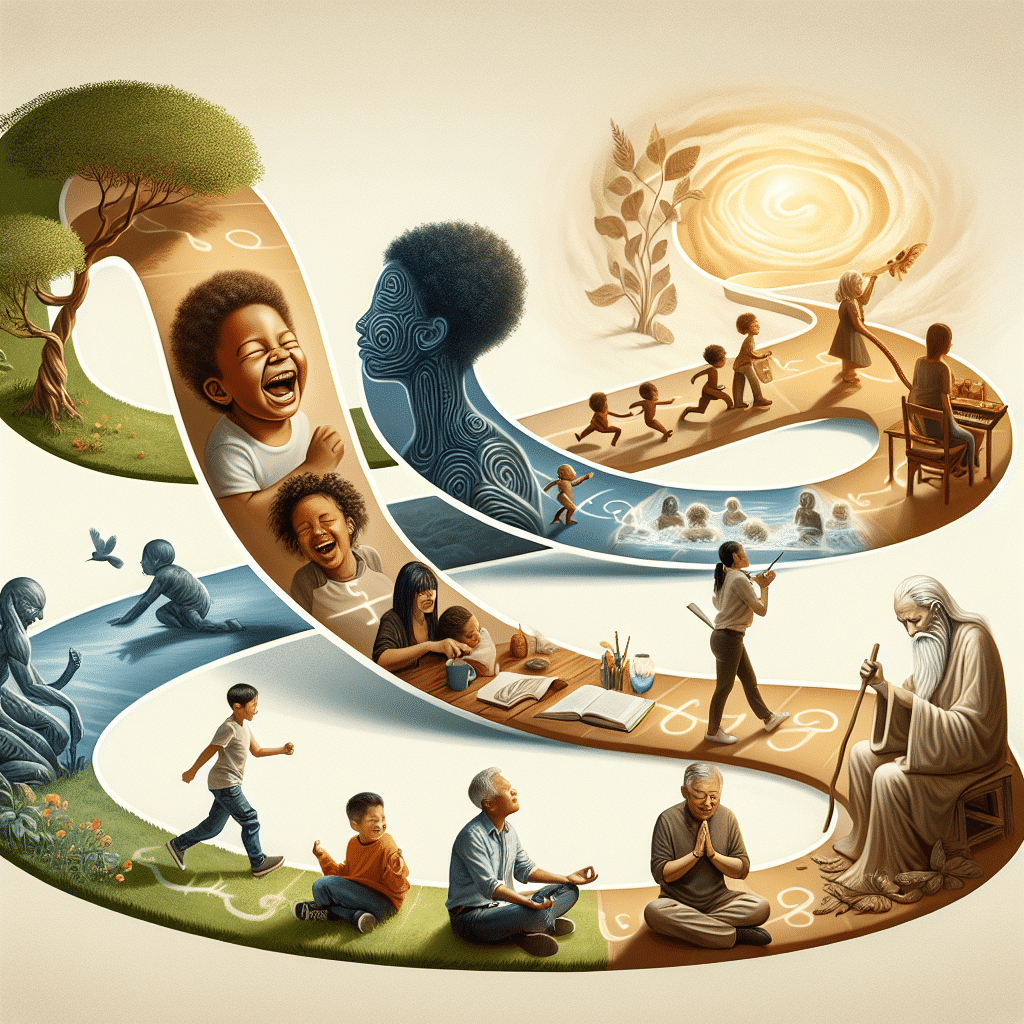
The evolution of gratitude technology has transformed the way individuals express and share appreciation in today’s digital age. From gratitude apps to online platforms, technological advancements have revolutionized the concept of gratitude, making it more accessible and widespread than ever before.
Technological innovations in the realm of gratitude have created new opportunities for individuals to cultivate a sense of thankfulness and positivity in their daily lives. By harnessing the power of technology, people can now easily convey their gratitude, connect with others, and foster a culture of appreciation in both personal and professional settings.
Let’s delve into the evolution of gratitude technology and explore how these advancements are shaping the way we express and experience gratitude in the modern world.
Benefits of Technological Advancements in Gratitude
Technological advancements in gratitude have brought about numerous benefits that enhance the practice of expressing and experiencing gratitude. These benefits include:
1. Increased Accessibility
With gratitude apps and platforms, individuals can easily access tools and resources to cultivate gratitude in their daily lives. This accessibility allows people to engage in gratitude practices conveniently, regardless of their location or schedule.
2. Enhanced Customization
Technology has enabled the personalization of gratitude experiences. Users can tailor their gratitude practices to align with their preferences and goals, leading to a more meaningful and impactful experience. Customization options may include gratitude journal prompts, reminders, and gratitude challenges.
3. Improved Tracking and Progress Monitoring
Gratitude technology often includes features that allow users to track their gratitude practices and monitor their progress over time. By visualizing their journey towards a more grateful mindset, individuals can stay motivated and committed to their gratitude goals.
4. Social Connection
Many gratitude apps and platforms incorporate social elements, such as sharing gratitude messages with friends or participating in gratitude challenges with a community. These social interactions foster a sense of connection and support, enhancing the overall experience of practicing gratitude.
5. Integration with Wellness Practices
Some gratitude technologies are designed to integrate with other wellness practices, such as meditation, mindfulness, or goal-setting. This integration allows individuals to create a holistic approach to well-being that combines various positive habits and activities.
In conclusion, technological advancements in gratitude offer a range of benefits that make it easier and more enjoyable for individuals to cultivate a grateful mindset. By leveraging these innovations, people can enhance their well-being, strengthen their relationships, and navigate life’s challenges with a positive outlook.
Examples of Gratitude Apps and Platforms
With the rise of technological advancements, there has been a proliferation of gratitude apps and platforms that aim to help individuals cultivate a practice of gratitude in their daily lives. These tools offer various features and functionalities to make expressing and experiencing gratitude more accessible and convenient. Here are some examples of popular gratitude apps and platforms:
1. Gratitude Journal Apps
Gratitude journal apps like “Grateful” and “The Five Minute Journal” provide users with a digital space to jot down things they are thankful for each day. These apps often come with prompts, reminders, and the ability to add photos or quotes to enhance the gratitude practice.
2. Gratitude Reminder Apps
Apps like “Happier” and “Grateful: A Gratitude Journal” send users daily reminders and prompts to reflect on what they are grateful for. These reminders help individuals stay consistent with their gratitude practice and foster a sense of mindfulness throughout the day.
3. Gratitude Community Platforms
Platforms like “Happyfeed” and “Thankful” create online communities where users can share their moments of gratitude, read and like other people’s posts, and engage in discussions around gratitude. These platforms foster a sense of connection and positivity among users, creating a supportive environment for practicing gratitude.
4. Gratitude Meditation Apps
Apps like “Insight Timer” and “Headspace” offer guided gratitude meditation sessions to help users develop a grateful mindset and cultivate feelings of appreciation and joy. These meditation apps combine mindfulness practices with gratitude exercises to promote overall well-being and mental health.
5. Gratitude Tracking Apps
Apps like “Gratitude Plus” and “Gratitude Garden” allow users to track their daily gratitude habits, set goals, and monitor their progress over time. These tracking apps provide visual representations of gratitude practices, making it easier for users to see the impact of gratitude on their mindset and emotional well-being.
Overall, these examples showcase the diverse range of gratitude apps and platforms available today, catering to different preferences and needs of individuals looking to incorporate gratitude into their lives through technology.

Challenges and Criticisms of Gratitude Technology
While technological advancements in gratitude have brought about numerous benefits, there are also challenges and criticisms associated with the use of gratitude technology.
1. Authenticity Concerns
One of the main criticisms of gratitude technology is the concern about the authenticity of expressions of gratitude through these platforms. Some argue that sending automated or templated messages of gratitude may lack the sincerity and personal touch that traditional handwritten notes or face-to-face interactions provide.
2. Over-reliance on Technology
Another challenge is the potential over-reliance on technology for expressing gratitude. In a world where sending a quick text or a social media post is easier than ever, some individuals may forego more meaningful forms of gratitude expression, such as in-person conversations or thoughtful gestures.
3. Privacy and Data Security
Gratitude technology platforms often collect and store personal information, including sensitive data related to individuals’ emotions and relationships. There are concerns about the privacy and security of this data, as well as the potential for it to be misused or exploited by third parties.
4. Lack of Cultural Sensitivity
Gratitude is a complex and culturally nuanced concept, varying across different societies and communities. Technological solutions for gratitude expression may not always account for these cultural differences, leading to misunderstandings or misinterpretations of gratitude messages.
5. Dependency on External Validation
Some critics argue that the use of gratitude technology can create a dependency on external validation for one’s feelings of gratitude. Constantly seeking likes, comments, or responses to gratitude messages may shift the focus from genuine appreciation to garnering social approval.
Overall, while gratitude technology offers innovative ways to cultivate a culture of appreciation, it is essential to address these challenges and criticisms to ensure that the benefits of technological advancements in gratitude are maximized while mitigating potential drawbacks.
The Future of Gratitude Tech: Potential Innovations and Trends
As technology continues to advance at a rapid pace, the future of gratitude tech holds exciting possibilities for enhancing the ways in which we express and experience gratitude. Here are some potential innovations and trends to look out for:
1. Virtual Reality (VR) Experiences
Imagine being able to transport yourself to a virtual world where you can express gratitude in unique and immersive ways. VR technology has the potential to revolutionize the concept of gratitude by providing users with interactive experiences that evoke powerful emotions.
2. Artificial Intelligence (AI) Personalization
AI algorithms can analyze user data to provide personalized recommendations for expressing gratitude. Whether it’s suggesting thoughtful gestures or customized messages, AI-powered platforms can help individuals cultivate a deeper sense of gratitude in their daily lives.
3. Gamification of Gratitude
By incorporating elements of gamification into gratitude platforms, users can engage in fun and interactive ways to express appreciation. Leaderboards, challenges, and rewards systems can motivate users to cultivate a habit of gratitude while making the experience enjoyable and engaging.
4. Integration with Wearable Technology
With the rise of wearable devices like smartwatches and fitness trackers, integrating gratitude features into these devices can make expressing appreciation more convenient and seamless. Users can receive prompts, reminders, and notifications to practice gratitude throughout their day.
5. Social Media Integration
Social media platforms are already popular channels for sharing experiences and connecting with others. The future of gratitude tech may involve integrating gratitude features into social media apps, allowing users to express gratitude publicly and inspire others to do the same.
Overall, the future of gratitude tech is bright, with endless possibilities for leveraging technology to enhance human connection, well-being, and positivity. By embracing these innovations and trends, we can create a world where expressing gratitude is not only easier but also more meaningful and impactful.

Summary
Technological advancements have revolutionized the way we express and cultivate gratitude in our lives. From gratitude journaling apps to social media platforms dedicated to spreading positivity, these innovations have made it easier for individuals to practice gratitude daily.
Despite the benefits of gratitude technology, there are also challenges such as privacy concerns and the potential for superficial expressions of gratitude. It’s important to strike a balance between using technology to enhance our gratitude practices while also maintaining authenticity and meaning in our interactions.
As we look towards the future, there is great potential for further innovations in gratitude technology, such as personalized gratitude reminders, virtual reality experiences, and AI-driven gratitude coaching. These advancements have the power to deepen our connections, enhance our well-being, and foster a culture of appreciation in society.






